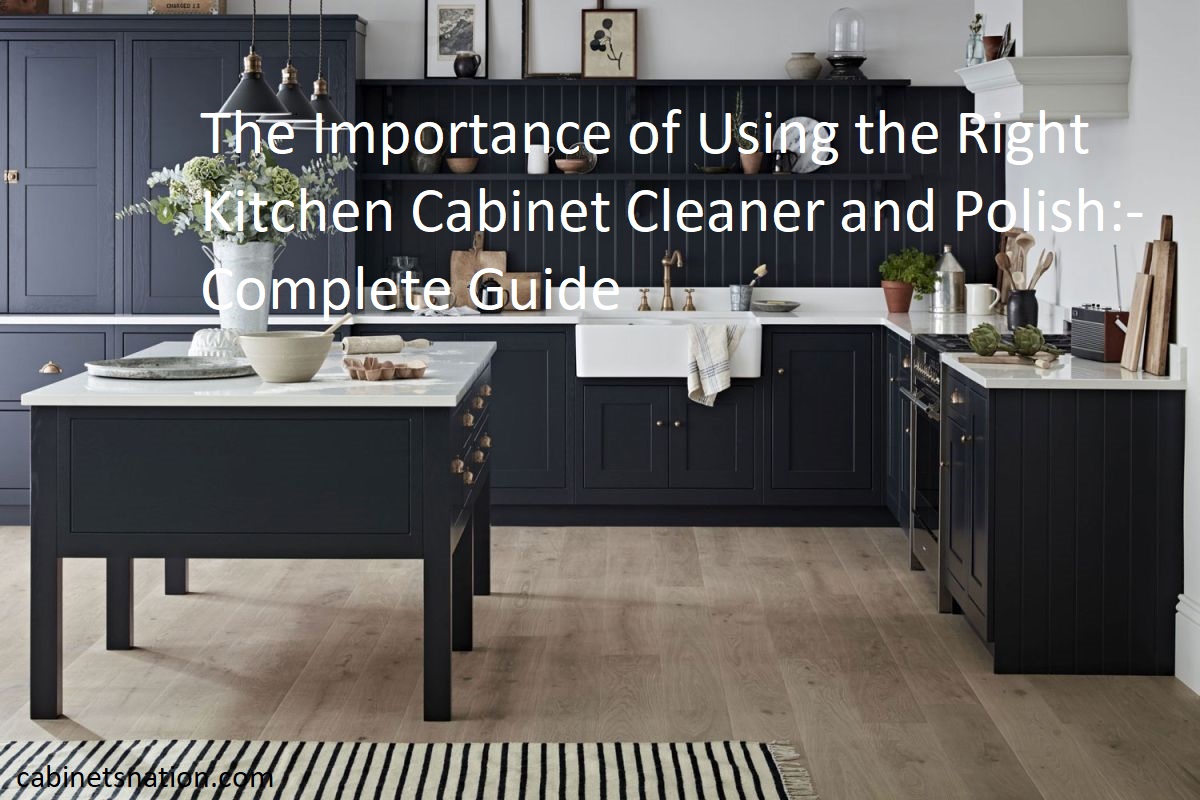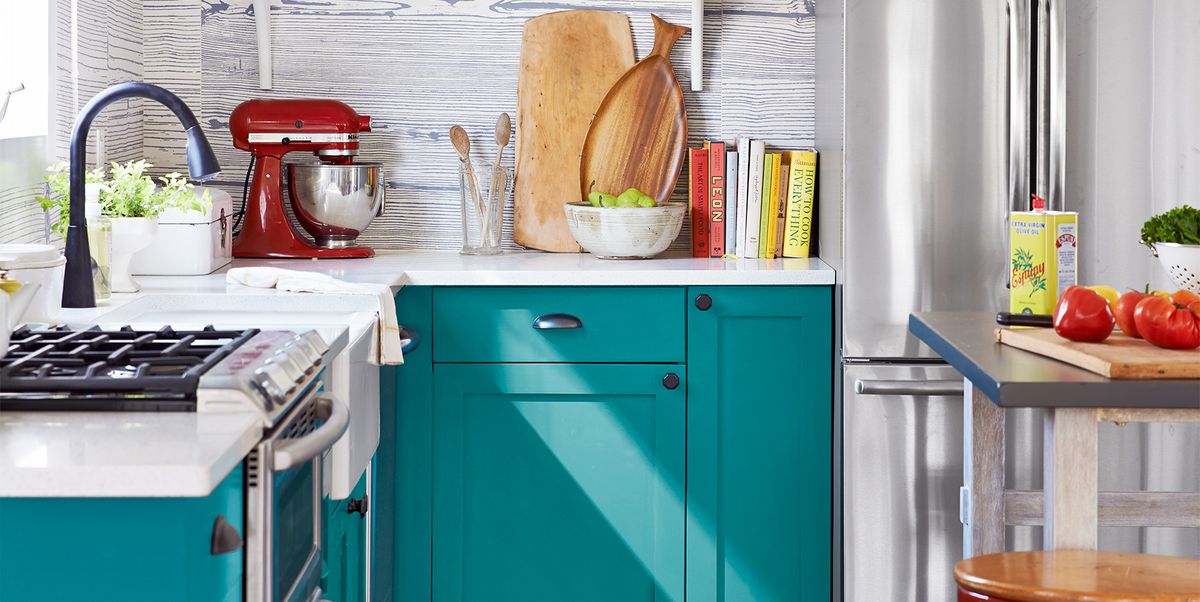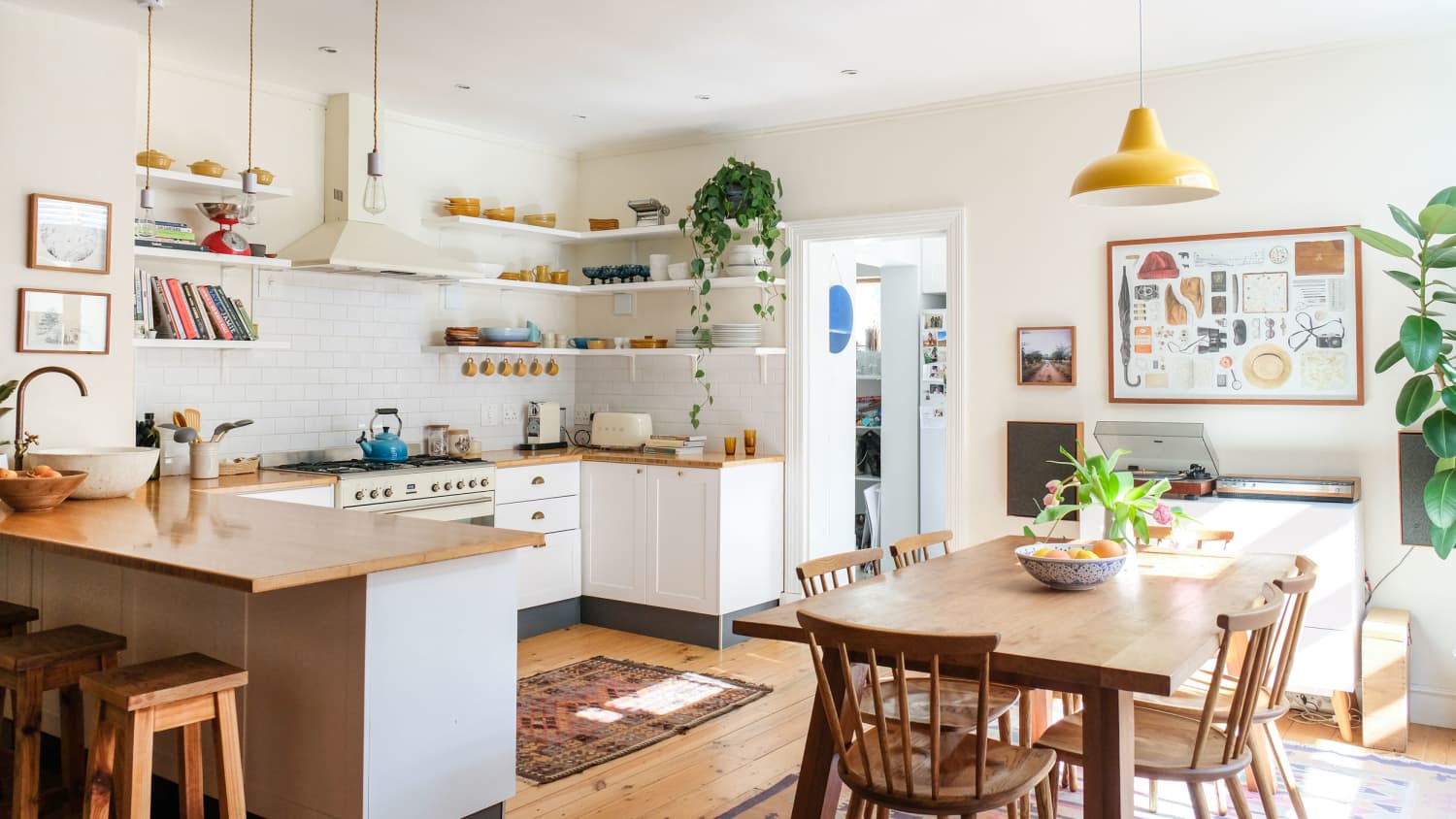You’ve been searching for the perfect kitchen cabinet cleaner and polish, but what does that look like? You need a product that is safe and effective, but also cleans and polishes your cabinets to preserve their aesthetics.
In this guide we’ll take you through the important considerations when selecting the right cleaner and polish for your kitchen cabinets. So read on if you’re looking for some essential tips on how to maintain your cabinets.
The kitchen is one of the most used and most important rooms in a house, yet it can also be one of the hardest to keep clean and tidy. A large part of this is due to cabinets – they hide away a multitude of cooking ingredients, large pots and pans, and serveware. Cabinets tend to be made out of wood with a finish that easily gets dusty or grimy over time. Cleaning kitchen cabinets is essential for keeping your kitchen looking fresh and preventing buildup from spoiling the cabinet’s finish.
To help make cleaning easier, it’s important to know what type of cleaner and polish to use for stubborn stains or to simply bring back the shine on your kitchen cabinets. This guide will go through some of the most effective cleaners and polishes available today, as well as provide some tips for efficient maintenance.
Common Types of Kitchen Cabinet Materials
When selecting an appropriate cleaning product for your kitchen cabinets, it is important to be aware of the type of material that your cabinets are made from. Common cabinet materials include wood and/or particleboard, plastic laminate, steel or stainless steel and thermofoil. Depending on the material your cabinet is made from, you may need to use different types of cleaners.
Wood and Particleboard: Many kitchen cabinets are constructed from wood or particleboard which can be damaged by harsh abrasive cleaner/polishes. When cleaning wooden/particleboard kitchen cabinets it is generally recommended to use a mild soap (diluted in warm water) and a soft cloth for wiping down the surface of the cabinet. Always follow up with a dry cloth, as water left on wooden surfaces can cause swelling or splitting. Harsh cleansers such as ammonia-based and bleach-based products will damage the finish of wooden kitchen cabinets.
Plastic Laminate: Cabinets constructed using plastic laminate are particularly vulnerable to damage caused by abrasive cleaners as they can scratch or dull the surface of the cabinet material and effect its appearance over time. Use a non-abrasive all purpose cleaner on these types of surfaces which can be applied with a soft cloth or sponge dampened in warm water. If difficult stains persist you may have to resort to more powerful removes such as Goof Off® which should only be used in extreme cases where nothing else has worked.
Steel/Stainless Steel: Kitchen cabinets made from steel require special care when cleaning them as certain harsh chemical compounds such as chlorine tarnish its finish over time. A mild soap solution combined with a soft brush should do the job here (always begin at some distant part of the cabinet when scrubbing). Avoid harsh abrasives and polishes that contain waxes which can stick to grease stains instead of removing them leaving a residue instead – try using stainless steel polish if desired for added shine!
Thermofoil: Thermofoil surfaces require delicate care when being cleaned — avoid any kind of chemical cleanser as these will discolor or damage thermofoil surfaces permanently – just use warm water and soap instead doing it gently with a soft cloth ensuring that all traces have been removed at teh end with another clean dry cloth before allowing them to air-dry completely.
Different types of kitchen cabinets and their properties
Choosing the right kitchen cabinet cleaner and polish requires understanding various types of kitchen cabinets and their properties. Cabinets are typically made from natural woods such as Pine, Oak, Cherry and Mahogany, as well as from manmade laminate materials. The type of cabinet material can affect how cleaning products react with the surface and how much wear-and-tear the cabinets can endure.
Natural Wood Cabinets – Natural wood cabinets are one of the most sought-after materials for kitchen cabinets due to their intrinsic beauty. Natural wood such as oak or cherry should not be treated with harsh chemical cleaners; instead, they should be wiped clean with a soft cloth dampened in a mild detergent surfaced specifically for wood. After cleaning, natural wood cabinets may also require an occasional application of polishing oil or wax to help maintain their youthful appearance by adding a protective barrier against humidity and staining agents.
Laminate Cabinets – Laminate is a synthetic material which is often composed of several layers that have been bonded together under high levels of heat pressure. Since they are rarely made with actual wood, these cabinets will not require polishing or the same degree of protection offered by natural woods. Cleaners designed specifically for laminate surfaces can help keep them looking fresh and in good condition for years to come. Harsh chemicals like bleach should be avoided when making a selection for cleaning laminates as these may cause damage over time to this fragile surface material.
Understanding the cleaning and polishing requirements for each type
When it comes to keeping your kitchen cabinets in tip-top condition and looking their best, it is vital that you understand the cleaning and polishing requirements for each specific type of cabinet. Knowledge of the material and how it reacts to different cleaning solutions will determine the correct products for use. For example, whilst one product might be perfectly suitable for use on wooden cabinets, it could be disastrously wrong when used on laminate ones.
In order to help with choosing the right kitchen cabinet cleaner and polish, let’s take a look at some of the most popular materials now used in kitchen design and detail what kind of maintenance they require:
Wooden Cabinets: Wood is an organic material that needs extra care when being cleaned. It should never come into contact with acids or ammonia-based cleansers as they can damage its surface as well as stripping away any sealant or protective layer. Instead, opt for polish specifically made for wood furniture which will both clean and preserve its life span whilst adding a beautiful glossy finish.
Laminate Cabinets: As laminate is made from several different types of man-made plastics, some additional caution should be taken when selecting the correct product for this kind of material. A mild detergent such as plain soapy water is often all that is needed to keep them looking clean but make sure not to scrub too hard – anything too abrasive may scratch its surface or leave residue behind! A specialist laminate cleaner will also help maintain its good condition over time by providing an anti-static barrier which helps eliminate dust build up.
Painted Cabinets: Many households now opt for paint finishes on their cabinetry which helps create an individual look within any given kitchen space – however this means extra care must be taken when carrying out routine maintenance! Cleaners containing harsh chemicals are a definite no go area here; instead opt for one specifically designed to help lift off dirt without affecting its coatings in any way – most manufacturers do offer their own branded cleaning solutions however non-abrasive multipurpose products can also be used successfully wherever possible. In order to keep your cabinets looking their best over time, periodically apply a wax based polish or similar treatment which offers maximum protection from everyday wear & tear!
Choosing the Right Kitchen Cabinet Cleaner
When it comes to cleaning and polishing your kitchen cabinets, there are several products to choose from. Cabinet cleaners are specially formulated with different ingredients and concentrations, and the type you select should depend on the cleaning task at hand. Here is a quick breakdown of what each type of cabinet cleaner can do:
Oil-based cleaners: Oil-based cleaners are ideal for removing grease, fingerprints, and smudges from surface finishes such as varnish or lacquer. They often have an oily residue but also provide a protective layer that preserves the surfaces of your cabinets.
Paste wax-based cleaners: Paste wax-based cleaners are excellent for providing an even glossy finish and fine protection for your cabinet surfaces. These products contain Carnauba wax or other natural waxes known for their durability yet soft feel when applied to wood surfaces. They also leave a pleasant sheen that is often used in more expensive cabinet stain jobs.
Synthetic wax-based cleaner: Synthetic wax is made from special formulas consisting of chemical solvents, detergents, and other substances that act as lubricants as they secure dust and debris on the surface of your cabinets. Some synthetic waxes may also provide a glossy finish but won’t be as durable as paste products over time.
No-rinse cleaning solution concentrates: Some quality concentrated solutions don’t require rinsing afterwards, making them ideal solutions for cleaning kitchen cabinets quickly without having to rinse them first with plain water. This can save time but make sure not to overexpose your cabinets to these solutions because they may become sticky or dry out after a while unless you replenish them with oil…
Explanation of the different types of kitchen cabinet cleaners
It is important to use the right type of kitchen cabinet cleaner, which depends on the surface material and finish of the cabinets. Cleaning kitchen cabinets removes build-up from food, grease, oil and fingerprints. The wrong cleaner can cause damage to many types of surfaces, so it is important to know what the cabinet surface is made from before you start a cleaning job. Here are some common kitchen cabinet materials and their respective cleaners:
Laminate or melamine: These types of cabinets often come in a gloss finish and can be easily cleaned with mild soap (such as dishwashing liquid) mixed with warm water. Avoid abrasive cleaners and scrub pads as they could damage the glossy layer on top.
Wood Cabinets: Wood cabinets require special cleaning techniques since they are more fragile than other materials. For wood cabinets, try a mild detergent (like dish soap) mixed with warm water; avoid strong detergents or solvents that could damage or dry out the wood surface. Using a wax-based polish periodically will also help protect against scratches.
Stainless steel: These surfaces require slightly different cleaners and these are available from most supermarkets; however, many people have limited success with these products because it may take several applications for them to work effectively on tough stains. A product like Bar Keepers Friend combined with warm water can work miracles on tough steel stains!
Factors to consider when choosing a cleaner
It is important to choose the right kitchen cabinet cleaner and polish for your home. There are many factors to consider when deciding which product is right for you, including the type of cabinets you have, what types of contaminants are present, and your budget. Here are some tips to help you find the best kitchen cabinet cleaner and polish:
Type of Cabinets: Different types of cabinets require different types of cleaners. For example, wood cabinets require a natural polish or cleaner that will protect the wood from scratches and other damage. Laminate cabinets need a more gentle cleanser to avoid damaging the material. Consider what type of cabinet material you have in order to choose an appropriate cleaner for it.
Contaminants: Depending on what level of cleaning is needed, it may be necessary to opt for a specialized kitchen cabinet cleaner and polish. Be sure to identify any chemical contaminants such as grease or food residue that need to be removed before choosing a product with strong chemical formulations since these can damage certain types of cabinets over time.
Budget: Kitchen cabinet cleaners and polishes come in a variety of price points, so consider your budget when making a selection. Higher priced options usually contain more effective formulas or higher quality ingredients than cheaper brands, but sometimes less expensive products can still provide good results if used correctly.
Applying the Cleaner and Polish
When applying the cleaner and polish, you want to be sure that you use a microfiber cloth or other soft cloth. Start by applying the polish to an area no bigger than one square foot. Work in a circular motion, covering all surfaces from top to bottom and side to side. Once complete, use a dry microfiber cloth to wipe off any excess product and buff the surface for the desired shine. Make sure that all surfaces are dry before moving onto the next section of cabinets. If you do not take care when using these cleaners, you risk doing more damage to your cabinets than good.
If there is excess polish buildup on the doors, hinges and pulls of your kitchen cabinets, wait until they are completely dry before attempting to remove them with a soft cloth or sponge that has been dampened in warm water.
Step-by-step guide for cleaning and polishing kitchen cabinets
Today, cabinets are often manufactured from a variety of materials including solid wood, laminated boards, veneers and more. Cleaning and polishing your kitchen cabinet surfaces is important in order to keep their cosmetically attractive look intact. Depending on the material used for your particular cabinet style, the right cleaners and polishing products can make all the difference.
The good news is that it’s not difficult to clean and polish kitchen cabinets when you know what supplies and steps to use. Starting with a thorough cleaning of your cabinet surfaces will provide a great base for you to apply any subsequent product.
To help you get started here is a step-by-step guide for cleaning and polishing kitchen cabinets:
- Gather necessary cleaning materials such as soft cloths, an all-purpose cleaner (ammonia or baking soda-based), nonabrasive scrubbing sponges or steel wool pads (for tougher dirt).
- Begin by dusting away surface residue with soft cloths, followed by wiping down surfaces with an all-purpose cleaner or baking soda-water solution. Be sure to remove stubborn spots with nonabrasive scrubbing sponges or steel wool pads if necessary.
- Once fully clean, dry off all cabinet surfaces with a soft cloth before applying polish to add shine and protect the surface finish from future residue build up and scratches; use common furniture polish available in stores – spraying it onto a lint-free cloth (not directly onto the surface) before wiping it on; alternatively there are specialty wood cleaners specifically designed for specific stains on different woods
- Finish off by wiping away any excess oil before completely buffing with a clean dry cloth for the final glossy look!
Techniques for removing stubborn stains and grease
Sometimes, despite regular cleaning, stubborn grease and stains build up on kitchen cabinet surfaces. While home remedies can be effective in removing it, these solutions are often not specially formulated to target the type of material used in kitchen cabinets. As such, they may cause damage to the finish or underlying wood if used incorrectly. In addition, certain types of stains may require a more specific type of cleaner than is found in most household cupboards.
Using the right kitchen cabinet cleaner and polish can help break down grease and food residue, as well as restore shine to older surfaces. To clean sticky areas or remove old finger prints use a low abrasion cleaner such as white vinegar mixed with water in equal amounts. Take a damp cloth and gently rub away at the area until it is clean. For tougher messes like dried oil residues from cooking or sauces that are not budging use warm soapy water or all-purpose cleaners designed for this type of surface. Use a soft cloth that won’t scratch and wring out any extra liquid so that you don’t saturate the material too much; soak up any excess moisture with a dry cloth afterwards to prevent watermarks from forming.
After wiping away dirt and stubborn stains, the next step is to apply polish for any added protection and lasting sheen; avoid using anything silicon based though as this can actually cause discoloration over time! Most kitchen cabinet polishes contain abrasives which can help break down both dirt and oily layers hindering overall shine restoration; however manufacturers often provide their own brand-specific products so it’s important to read labels carefully before purchasing anything new especially if you have an aluminum finish or something else special on your cabinets that needs attention! Finally rinse off any remaining residue with warm water (a second coat of polish may also be necessary depending on severity) then buff out with a soft cotton chamois to achieve maximum results—happy cleaning!
Maintaining Clean Kitchen Cabinets
In order to keep kitchen cabinets looking neat and presentable, it is important to regularly clean and maintain them. Cleaning kitchen cabinets should be done in an organized manner. As with any cleaning project, the best place to start is by removing all items from the cabinet, including dishes, pans, utensils, food storage containers and any other items that may be stored inside.
Once all items have been removed from the cabinet, it is then possible to clean every surface thoroughly. It is also recommended that a mild detergent or cleaning solution be used when cleaning wooden surfaces; metal surfaces can then be cleaned with a damp cloth or sponge.
After this process has been completed, it is important to carefully dry off any excess moisture and then apply a protective coating such as a sealant or furniture wax. Once this has dried completely, cabinets can then be polished using either a soft cloth or felt polishing pad before being replaced back in their original positions.
Conclusion
In conclusion, using the right kind of kitchen cabinet cleaner and polish is essential for keeping your cabinets looking their best for years to come. There are numerous types of products available that can help you accomplish this goal, and it is important to understand the differences between them in order to ensure that you are using the best cleaner and polish for your specific needs and preferences. Doing so can save you time and money while also providing a lasting shine that will continue to look great long after you finish up your cleaning.
FAQ’s
Why is it important to clean kitchen cabinets?
It is important to clean kitchen cabinets to maintain hygiene, as well as providing an aesthetically appealing kitchen environment.
What is the best way to clean and polish kitchen cabinets?
The best way to clean and polish kitchen cabinets is to use a mild detergent, warm water, and a soft cloth. After cleaning, apply a polish or wax made specifically for wood cabinets.
Should you polish your kitchen cabinets?
Yes, you should polish your kitchen cabinets to keep them looking clean, glossy and attractive.
What should be the first thing to do in cleaning a kitchen cabinet?
The first thing to do in cleaning a kitchen cabinet is to remove all items from the cabinet and clear all shelves.
What is the most important reason for cleaning the kitchen?
The most important reason for cleaning the kitchen is to remove harmful bacteria and other contaminants and maintain a safe, sanitary environment.
Why is it important to have a clean kitchen give 5 reasons 5 points?
- A clean kitchen prevents the spread of germs, foodborne illness, and pests.2. A clean kitchen helps reduce the risk of food contamination.3. It helps keep food tasting fresh and nutritious.4. Cleaning is essential for proper food storage and rotation. 5. A clean kitchen promotes a healthier and more enjoyable cooking experience.
What are the benefits of maintaining kitchen surfaces clean?
The benefits of maintaining kitchen surfaces clean include reducing the spread of bacteria and other contaminants, eliminating odors, and improving the overall look and feel of the kitchen. Clean kitchen surfaces also help to improve food safety and can provide an added sense of safety and comfort in the home.
What are the benefits of a cleaning schedule in a kitchen?
The benefits of a cleaning schedule in a kitchen include increased efficiency, cost savings, and improved safety and hygiene. An organized cleaning schedule helps staff save time, as they know what tasks need to be completed when, allowing for a more efficient workflow. A cleaning schedule also helps save money, as staff can focus on areas that require more attention, rather than spending time and resources on those that do not. Lastly, an organized and thorough cleaning schedule will help improve safety and hygiene, as a clean environment helps keep staff and customers safe.
What do you clean kitchen cabinets?
To clean kitchen cabinets, use either a mild detergent and warm water, or a mixture of white vinegar, baking soda, and warm water.
What is the best way to clean kitchen cupboards?
The best way to clean kitchen cupboards is to first wipe them down with a wet cloth to remove any dust and dirt. Then, use a mild cleaning solution of 1 part water to 1 part white vinegar and wipe down the cupboards again. Finally, rinse the cupboards off with clean water and let them air dry.
See more-
- Best cabinet liners 2023
- Best file cabinet for home office 2023
- Best cabinet doors 2023
- Best guitar cabinet 2023
- Best cabinet primer 2023


